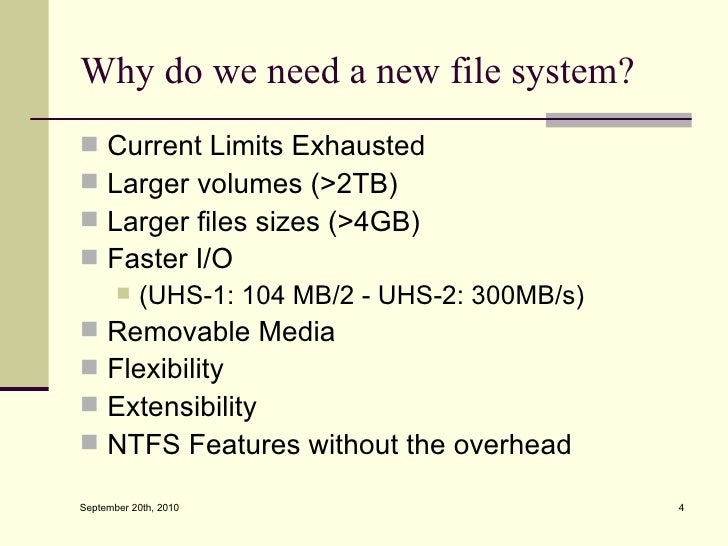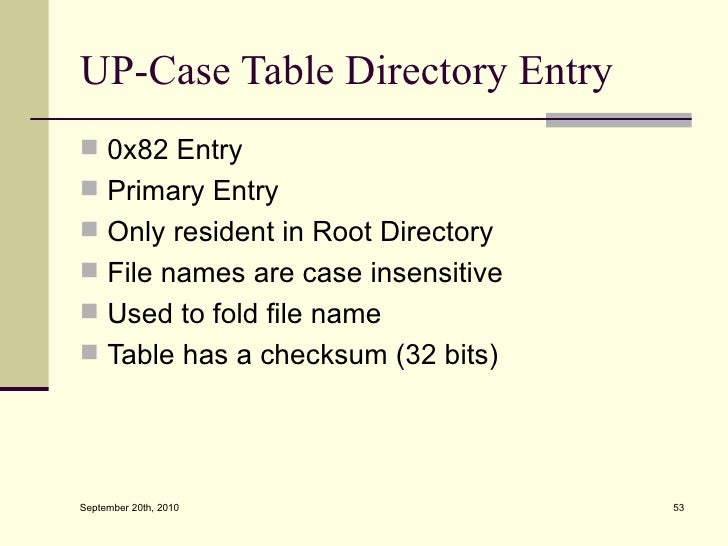The extended file system, or ext, was implemented in April 1992 as the first file system created specifically for the Linux kernel. It has metadata structure inspired by the traditional Unix File System (UFS) and was designed by Rémy Card to overcome certain limitations of the MINIX file system.

Jun 15, 2016 · Sven Groot and Seth Juarez explore WSL file system support.



Here you can learn the basics of a file system, the peculiarities of different file system types and discover how information is actually stored on your storage device.
Default File system In Windows XP, 2k and NT ; Support For Drives over 40gb, Files over GB ; Allows extended file names, foreign characters ; Has a severely crippled maintenance system in chkdsk

Extended file attributes are file system features that enable users to associate computer files with metadata not interpreted by the filesystem, whereas regular attributes have a purpose strictly defined by the filesystem (such as permissions or records of creation and modification times).
In the subsequent years, the FAT file system advanced to FAT12, FAT16, and finally, FAT32 that has been synonymous with the word file system when we have to deal external storage media like removable drives.
NTFS Data Recovery Info and Recovery Software. All about NTFS & FAT File Systems




Introduction. This page is intended to provide an introduction to the original File Allocation Table (FAT) file system. This file system was used on all versions of MS-DOS and PC-DOS, and on early versions of Windows; it is still used on floppy disks formatted by Windows and some other systems.
Last updated: 02 May 2012. A Few Notes. Please note that: This web site is not to be used for commercial purposes. I’m the only one allowed to make money out of it.

Apr 16, 2018 · FAT OVERVIEW FAT is by far the most simplistic of the file systems supported by Windows NT. The FAT file system is characterized by the file allocation table (FAT), which is really a table that resides at the very “top” of the volume.